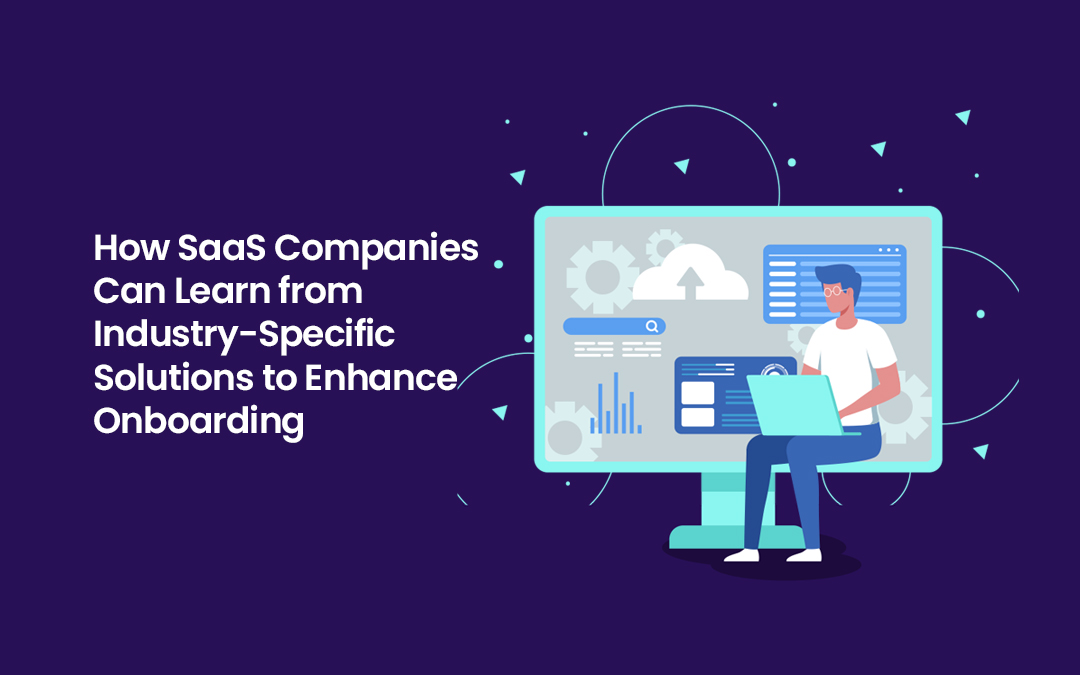
In the rapidly evolving Software-as-a-Service (SaaS) landscape, onboarding remains one of the most critical phases in ensuring long-term customer success. A seamless onboarding process not only helps customers understand and appreciate the software but also drives retention, reduces churn, and fosters customer loyalty. While general SaaS solutions cater to a broad audience, industry-specific solutions often have the advantage of deep insights into unique user needs and challenges. By examining how these tailored solutions approach onboarding, SaaS companies can significantly enhance their onboarding strategies, ensuring they cater to the specific needs of their customers.
1. Understanding the Role of Industry-Specific Solutions
Industry-specific solutions are designed to meet the needs of a particular sector, whether healthcare, finance, retail, or emergency services. These platforms provide specialized features, workflows, and support tailored to the unique challenges organizations face within that industry. For example, EMS (Emergency Medical Services) ePCR (electronic Patient Care Reporting) software is designed specifically for paramedics and emergency response teams. It includes features such as patient data tracking, real-time reporting, and integration with medical records systems—all critical for efficient operations in emergency healthcare.
These tailored solutions tend to have a much clearer understanding of what their users need and how they interact with the software. This deep industry knowledge offers valuable lessons that SaaS companies can adopt to create a more effective onboarding experience.
2. Targeted Training and Guidance
One of the most successful strategies employed by industry-specific solutions is providing targeted, role-based training. In sectors like EMS, where users have specialized roles, ePCR software often offers training tailored to the specific needs of paramedics, supervisors, and data analysts. This ensures that each user understands how to use the software in the context of their role rather than offering generic, one-size-fits-all training.
SaaS companies can benefit from this approach by offering segmented onboarding pathways based on the user's role, experience level, or business goals. For instance, a project management tool can offer different onboarding modules for project managers, team members, and executives. This method personalizes the onboarding experience and increases the likelihood of adoption.
3. Streamlining User Experience with Contextual Features
Industry-specific software often thrives because it simplifies complex workflows. For example, EMS ePCR solutions are designed to align with the fast-paced, high-pressure environment of emergency healthcare, where every second counts. These platforms are optimized for quick access, intuitive design, and easy navigation, all of which are critical in emergency settings. The same principles can be applied to SaaS onboarding.
By incorporating contextual features that guide users through essential tasks, SaaS companies can improve user engagement. SaaS products should prioritize creating an intuitive, user-friendly interface that minimizes the learning curve. Using tooltips, interactive tutorials, and step-by-step guidance can empower users to quickly familiarize themselves with core functions, similar to how industry-specific solutions use tailored workflows to simplify complex processes.
4. Ongoing Support and Feedback Loops
Industry-specific solutions often provide continuous support, understanding that onboarding does not end after the first few interactions. For example, EMS ePCR software providers often have 24/7 support, given that emergency services operate around the clock. Furthermore, regular check-ins and updates ensure users continue to get the most out of the software.
SaaS companies can take a similar approach by incorporating continuous support mechanisms into their onboarding process. Offering live chat support, in-app messaging, and easy access to customer service ensures users feel confident using the software after the initial onboarding phase. Furthermore, creating feedback loops where users can easily share their challenges with the product can help SaaS companies refine the onboarding experience and address user pain points proactively.
5. Customization and Integration with Existing Systems
Another advantage of industry-specific solutions is their ability to integrate seamlessly with existing systems. In the case of EMS ePCR software, integration with dispatch systems, hospital databases, and medical devices is essential. These tailored integrations make the software more valuable and efficient, directly improving the user experience.
SaaS companies should consider similar customization options for their onboarding process. By offering robust integration capabilities with other popular tools and platforms their customers use, SaaS providers can streamline the user experience and reduce friction. The ability to customize onboarding flows, features, and integrations according to a customer’s existing tools can significantly enhance user adoption.
6. Building a Community of Users
Industry-specific solutions often foster a strong sense of community among their users, who share similar challenges and goals. This can be seen in EMS, where paramedics and healthcare professionals exchange tips and best practices on using ePCR software effectively. By creating spaces for peer-to-peer learning, SaaS companies can enhance their onboarding experience and create a more supportive user environment.
SaaS companies should invest in building vibrant user communities, whether through forums, user groups, or customer advisory boards. Encouraging users to share their experiences, tips, and suggestions not only helps them learn but also builds a sense of belonging and loyalty to the brand.
Conclusion
SaaS companies can draw valuable lessons from industry-specific solutions by focusing on personalization, contextual training, integration, and ongoing support during the onboarding process. By tailoring their onboarding to the unique needs of their customers, they can increase user engagement, improve product adoption, and ultimately drive greater customer success. As SaaS solutions continue to evolve, adopting the best practices of industry-specific solutions will be key to staying ahead of the competition and ensuring long-term growth.
Share this post
Leave a comment
All comments are moderated. Spammy and bot submitted comments are deleted. Please submit the comments that are helpful to others, and we'll approve your comments. A comment that includes outbound link will only be approved if the content is relevant to the topic, and has some value to our readers.

Comments (0)
No comment